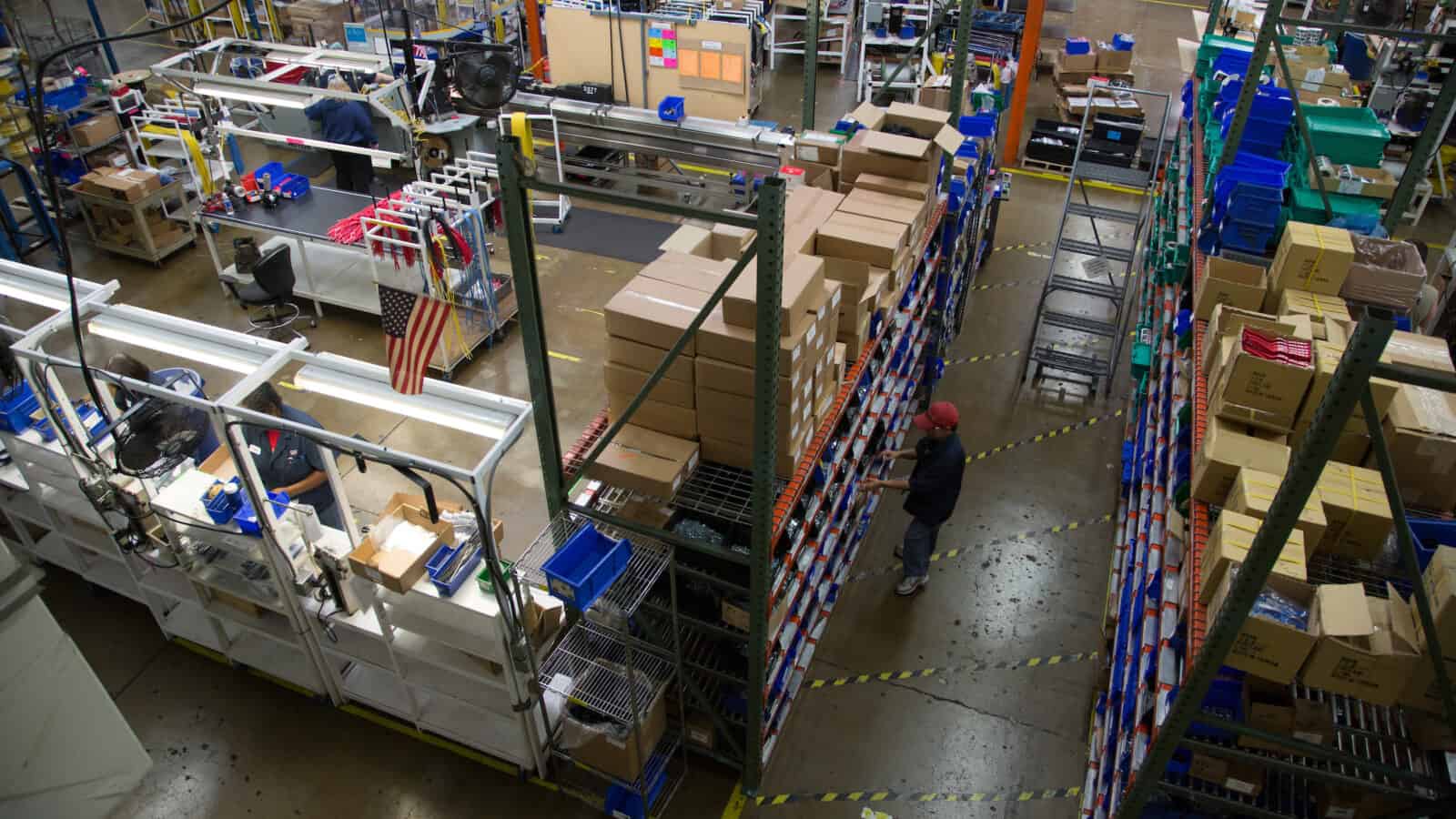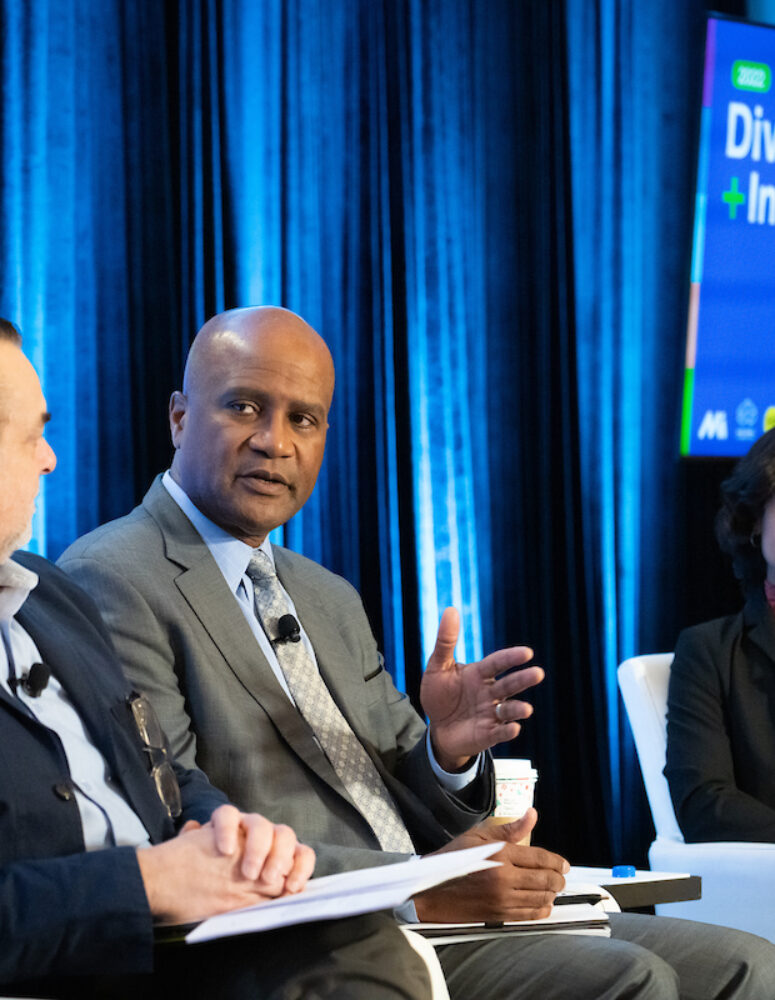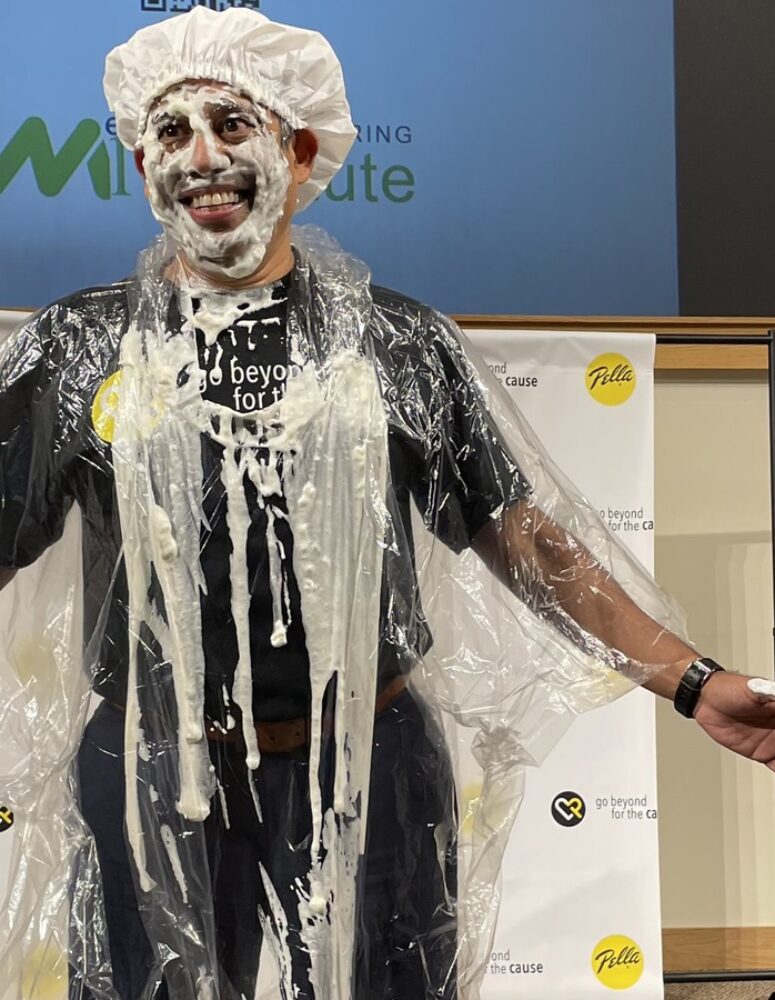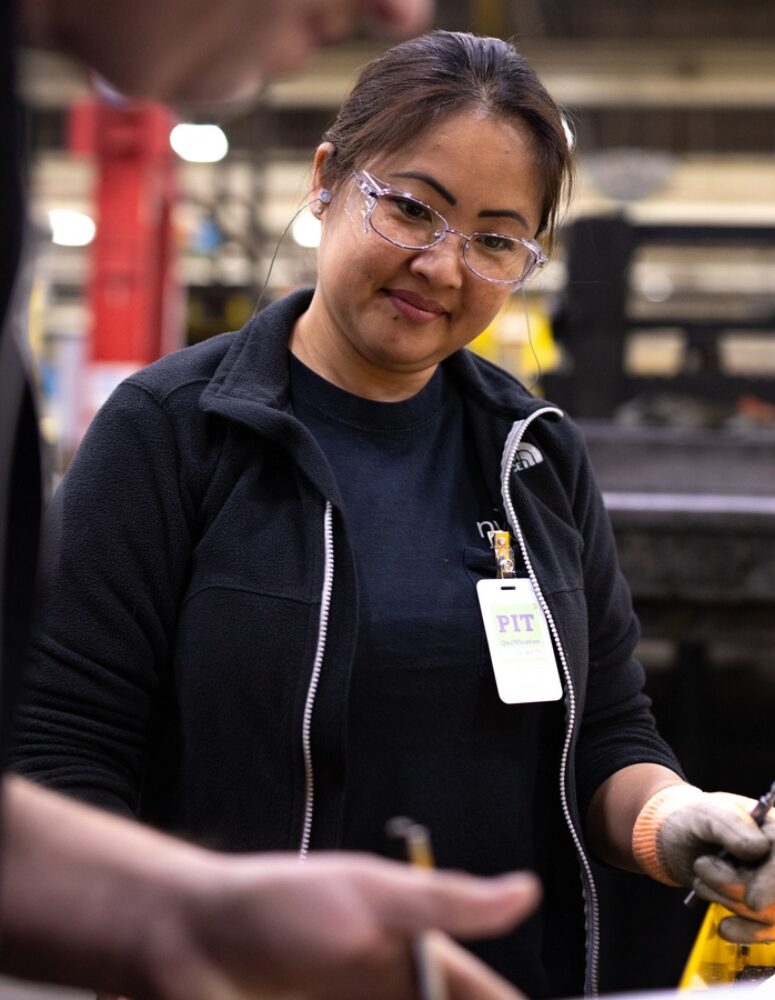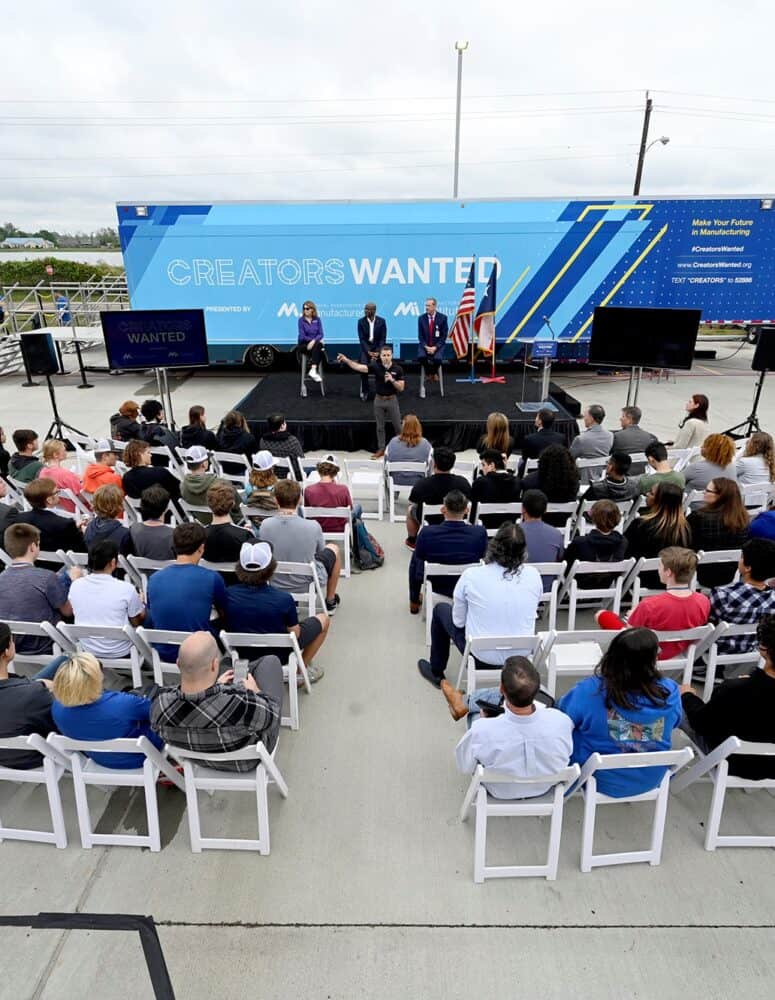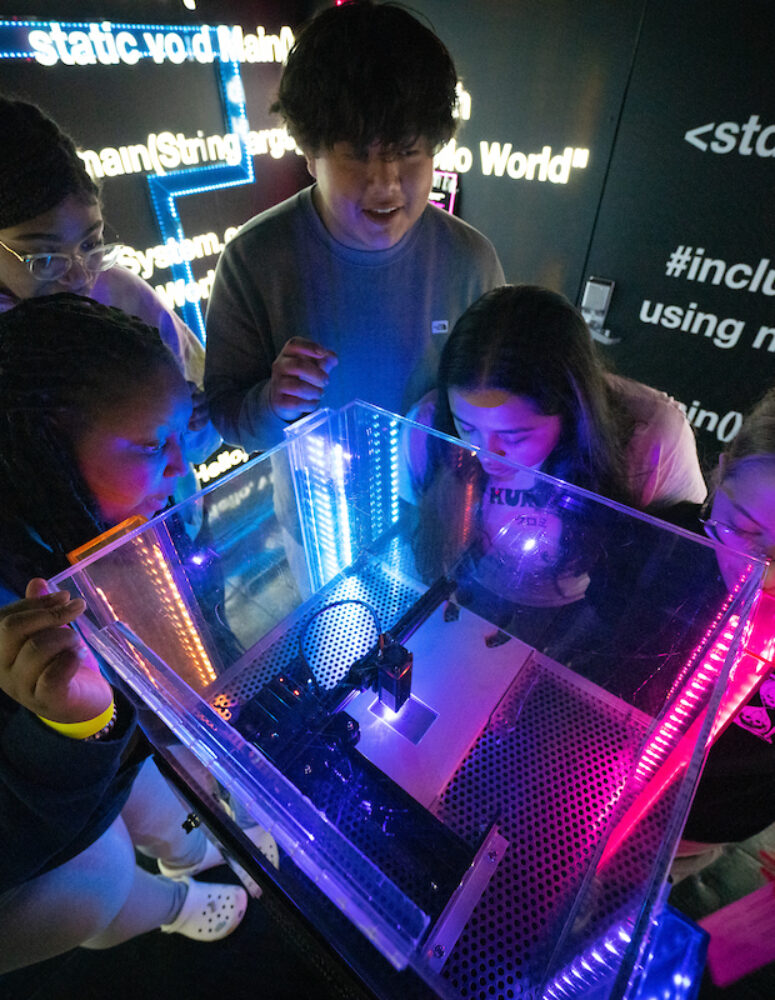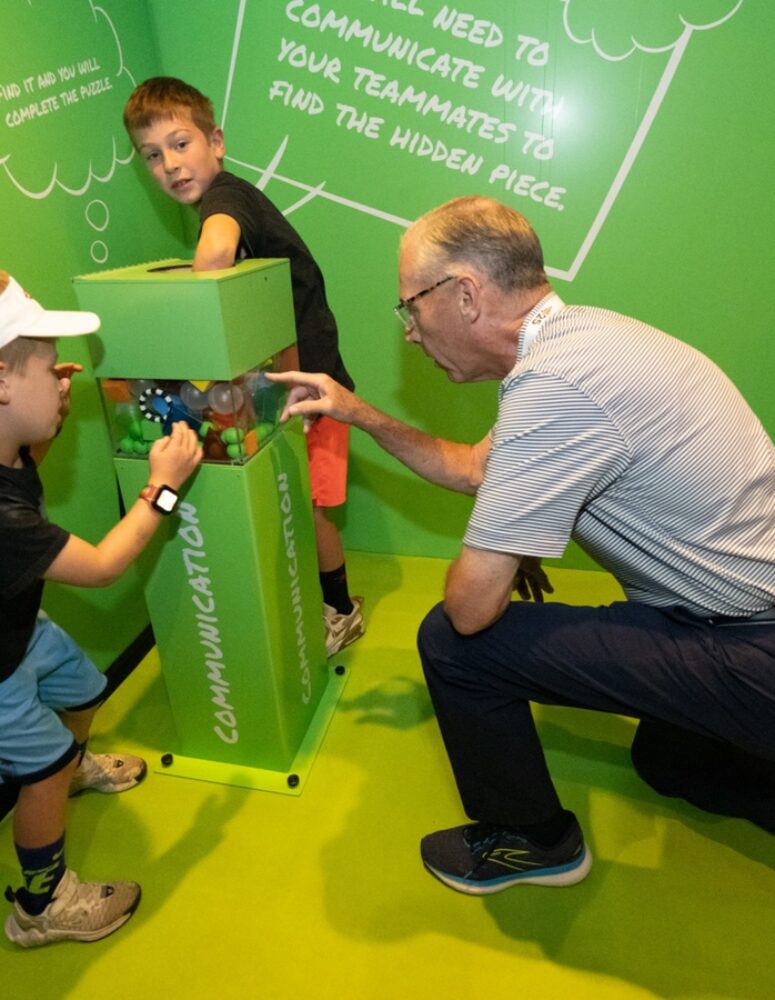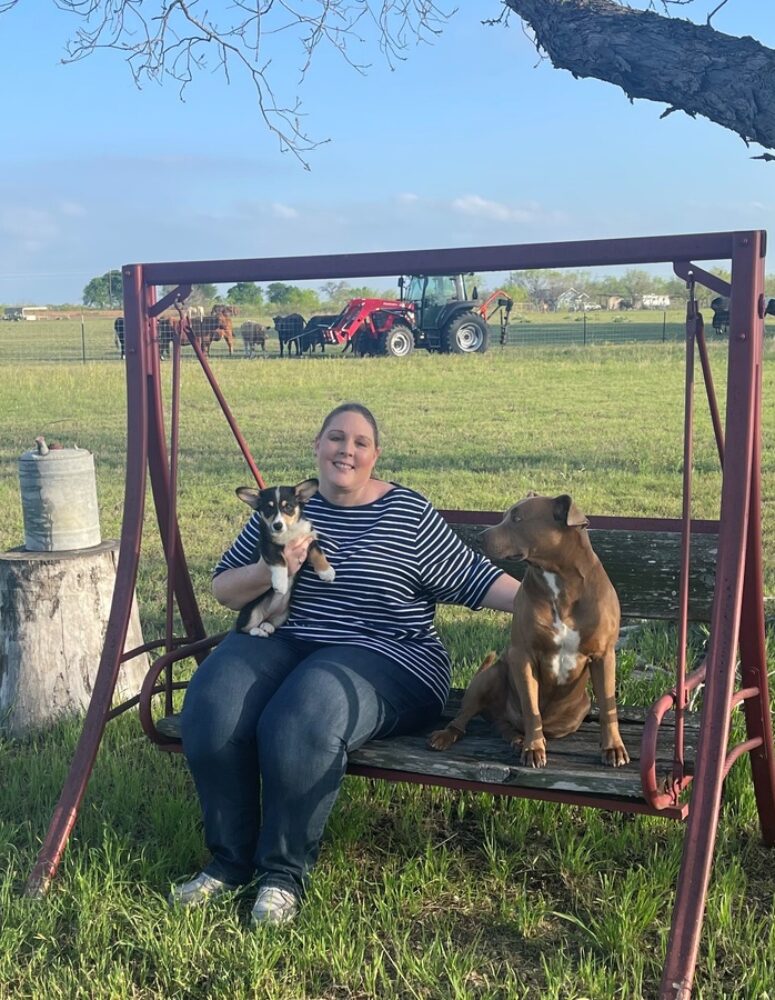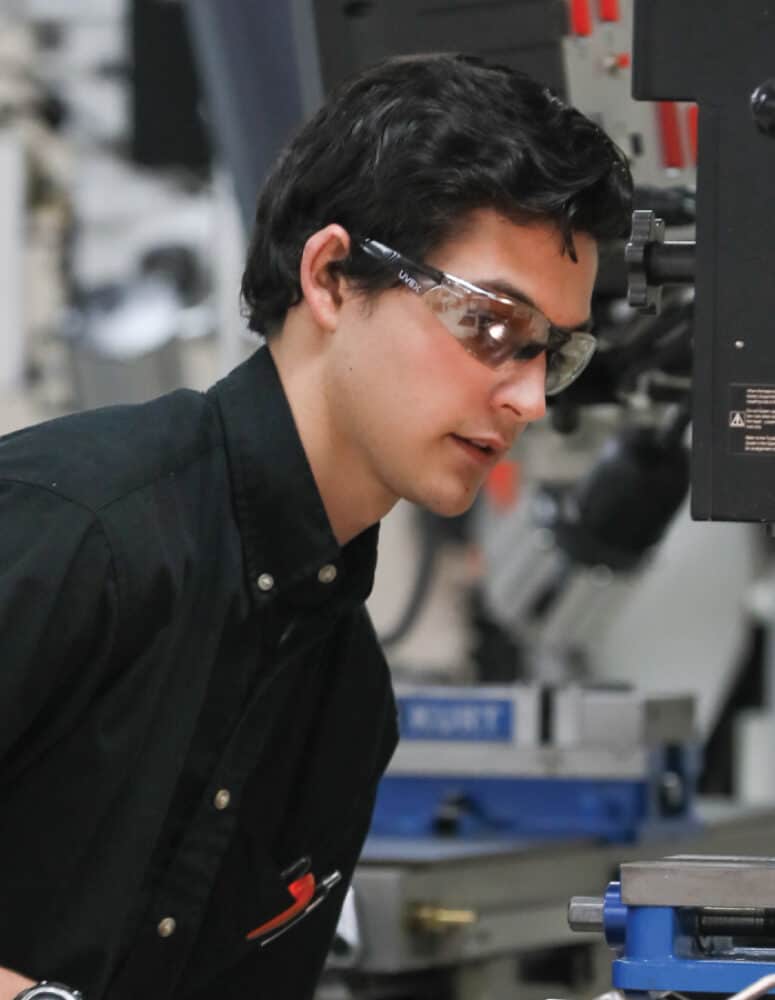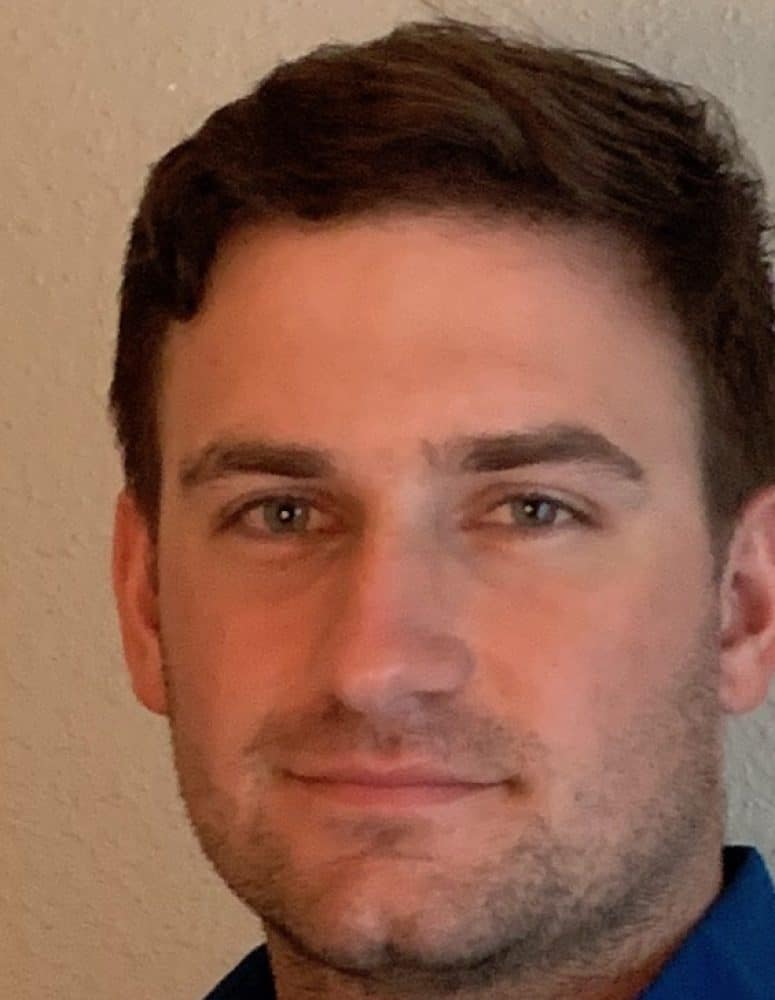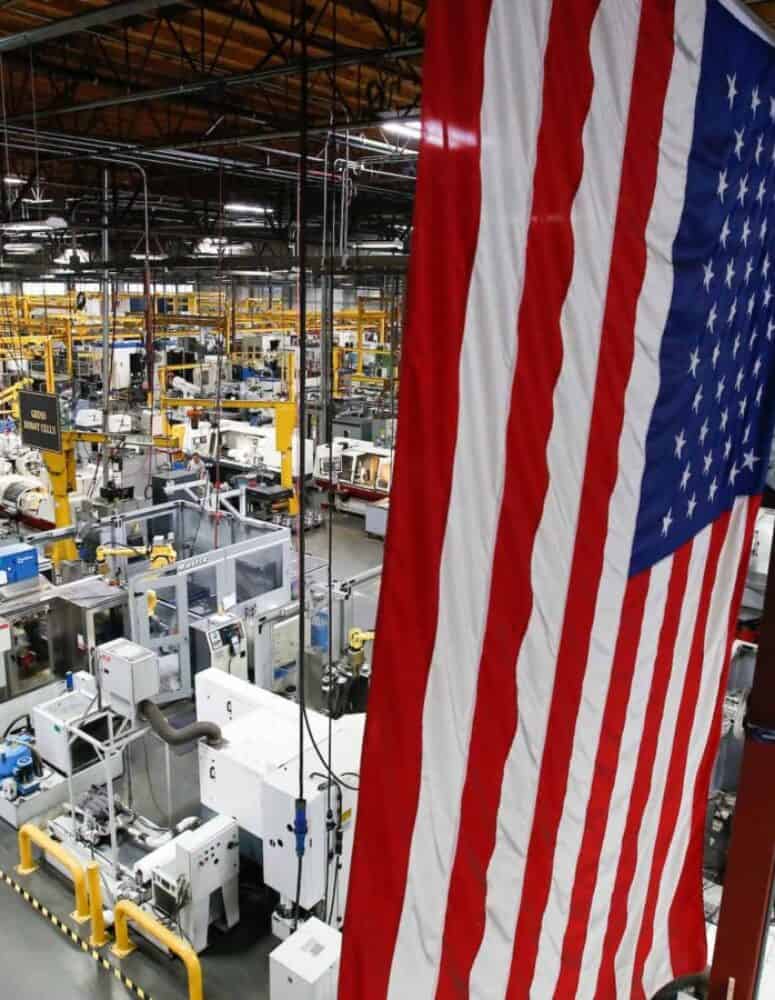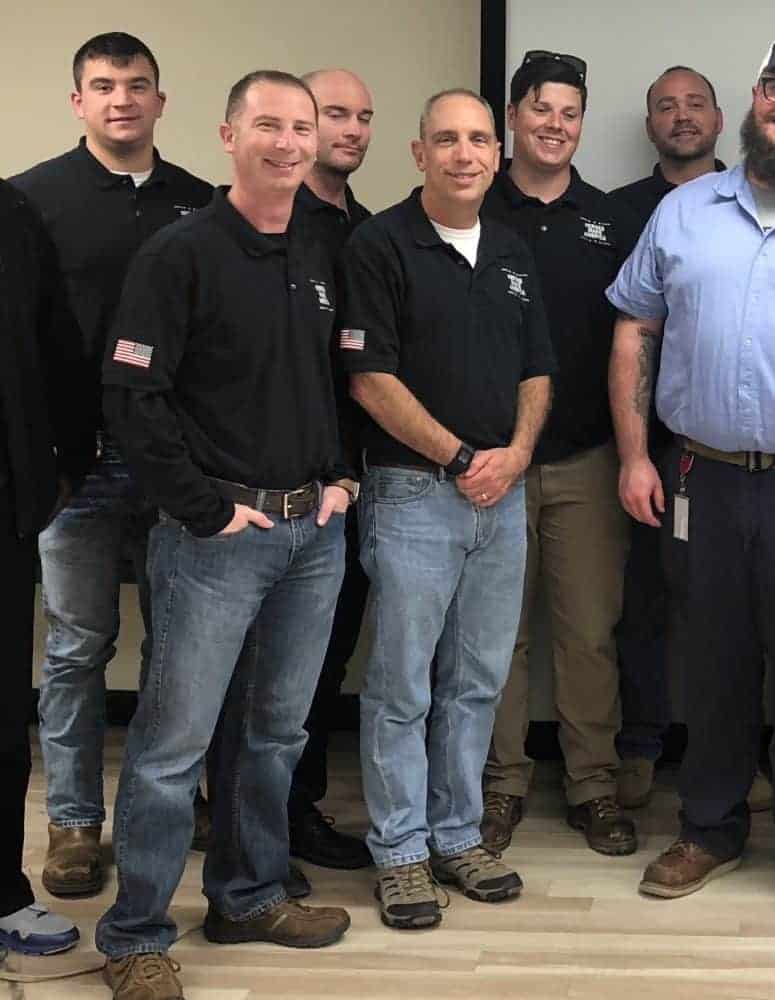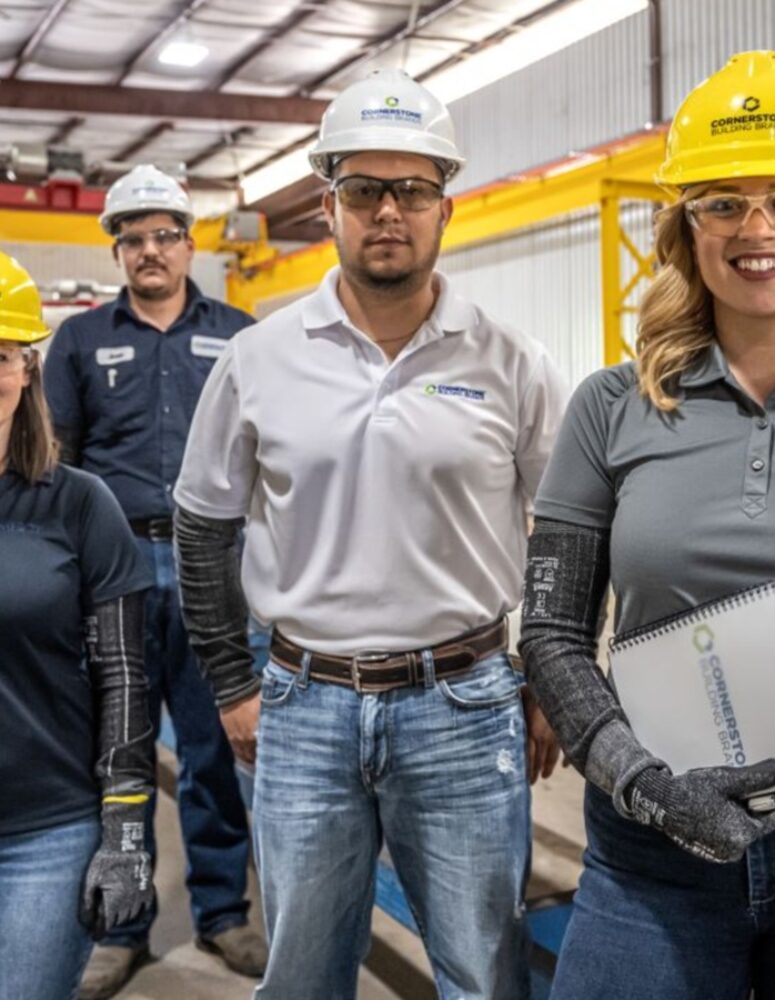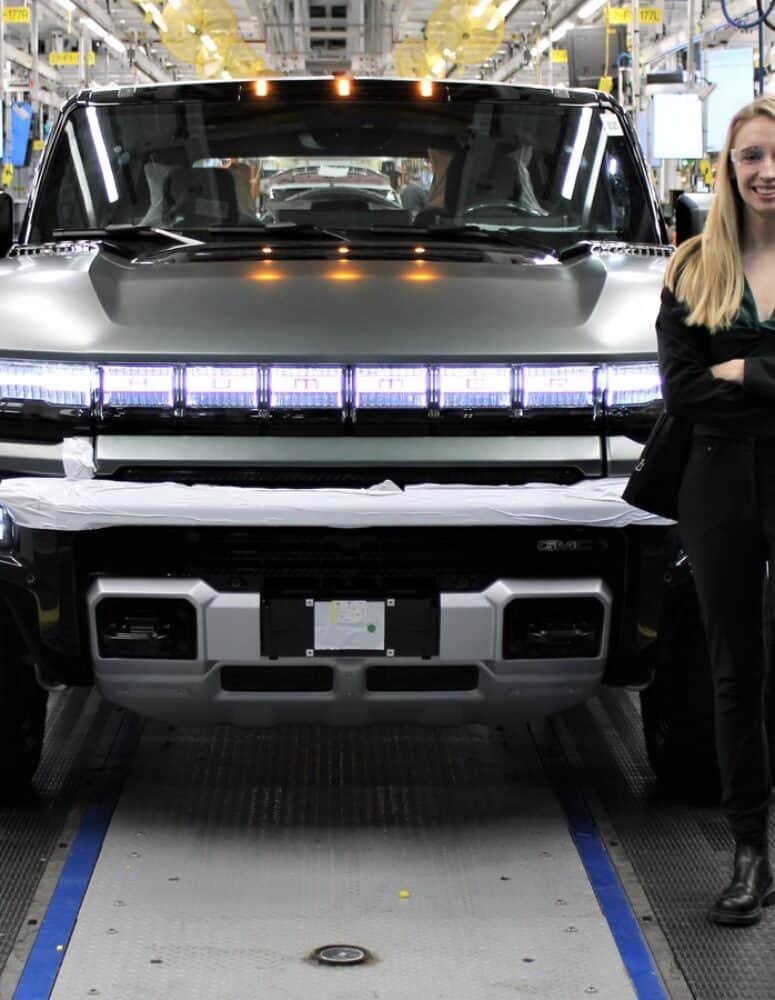New MI Report: Manufacturers Make Strides in Addressing DE&I Priorities
Since the MI’s inaugural DEI benchmarking survey, conducted in partnership with Keybridge and released in October 2021, manufacturers have taken active steps to improve DEI in the workplace. The MI has recently surveyed manufacturers again to highlight current practices and attitudes around DEI in our new DEI Benchmarking in Manufacturing Report. Our updated survey lays out how manufacturing employers are approaching their companies’ initiatives in new ways. The report provides helpful information on the state of DEI in the manufacturing industry and recommendations for employers to use as they improve on progress made over the last two years. Check it out here.
KEY TAKEAWAYS:
- 72% of manufacturers agreed that improving and maintaining DEI was a key focus for their company – and many of them have been taking tangible steps towards that goal.
- More than 60% of respondents reported that the representation of women within their companies has increased in the past 5 years.
Manufacturers Make Progress on DE&I

Diversity, equity and inclusion efforts have a lot of payoffs: they widen talent pipelines, increase retention rates and improve business outcomes. So what are manufacturers doing to strengthen DE&I in their workplaces? A newly updated survey from the MI and Keybridge has the answers.
What it is: The MI and Keybridge conducted their inaugural DE&I benchmarking survey in October 2021, and manufacturers’ DE&I efforts have grown a lot since then. One year later, the MI and Keybridge repeated the survey, and the results are in—along with recommendations for manufacturers seeking to grow further.
A firm commitment: 72% of manufacturers agreed that improving and maintaining DE&I was a key focus for their company in 2022—and many of them have been taking tangible steps toward that goal.
- Of the 60% of companies that made public statements affirming their commitment to DE&I, most have followed through with diversity commitments, employee resource groups, donations and transparent updates on their DE&I progress.
Widening talent pools: More than 60% of respondents reported that the representation of women within their companies has increased in the past five years. Still, there were also some challenges in expanding the diversity of hiring pools.
- 50% of companies reported struggling with hiring diverse candidates, with 40% struggling with retaining diverse workers.
Where to start: Companies that have not yet taken concrete actions toward fulfilling their commitments can get started by developing a strategic plan or designating a senior leadership position for DE&I issues, the report recommended.
- Another useful tactic is setting up feedback mechanisms for employees, so the company can track its progress on DE&I.
More recommendations: For those further along, the report suggests other moves, including:
- Expand recruitment pipelines by partnering with community organizations, community colleges and technical schools to tap into more diverse pipelines.
- Update position descriptions with language that widens and diversifies the applicant pool.
- Review hiring practices to minimize bias, such as by including blinded resume reviews, standardizing interview questions and employing skills tests and panel interviews.
- Standardize the promotion processes by using the same scoring system and criteria for all employees, seeking input from multiple sources and highlighting clear career pathways.
- Standardize work assignment systems by cross-training workers, to ensure that no one employee is stuck in an undesirable role for too long.
The last word: “The labor market is historically tight, and we know the number one issue for manufacturers is workforce,” said NAM Chief Economist and Manufacturing Institute Center for Manufacturing Research Director Chad Moutray. “Focusing on DE&I is a great way to widen the net and retain the employees that you have.”
Creators Wanted Makes an Impact at SkillsUSA
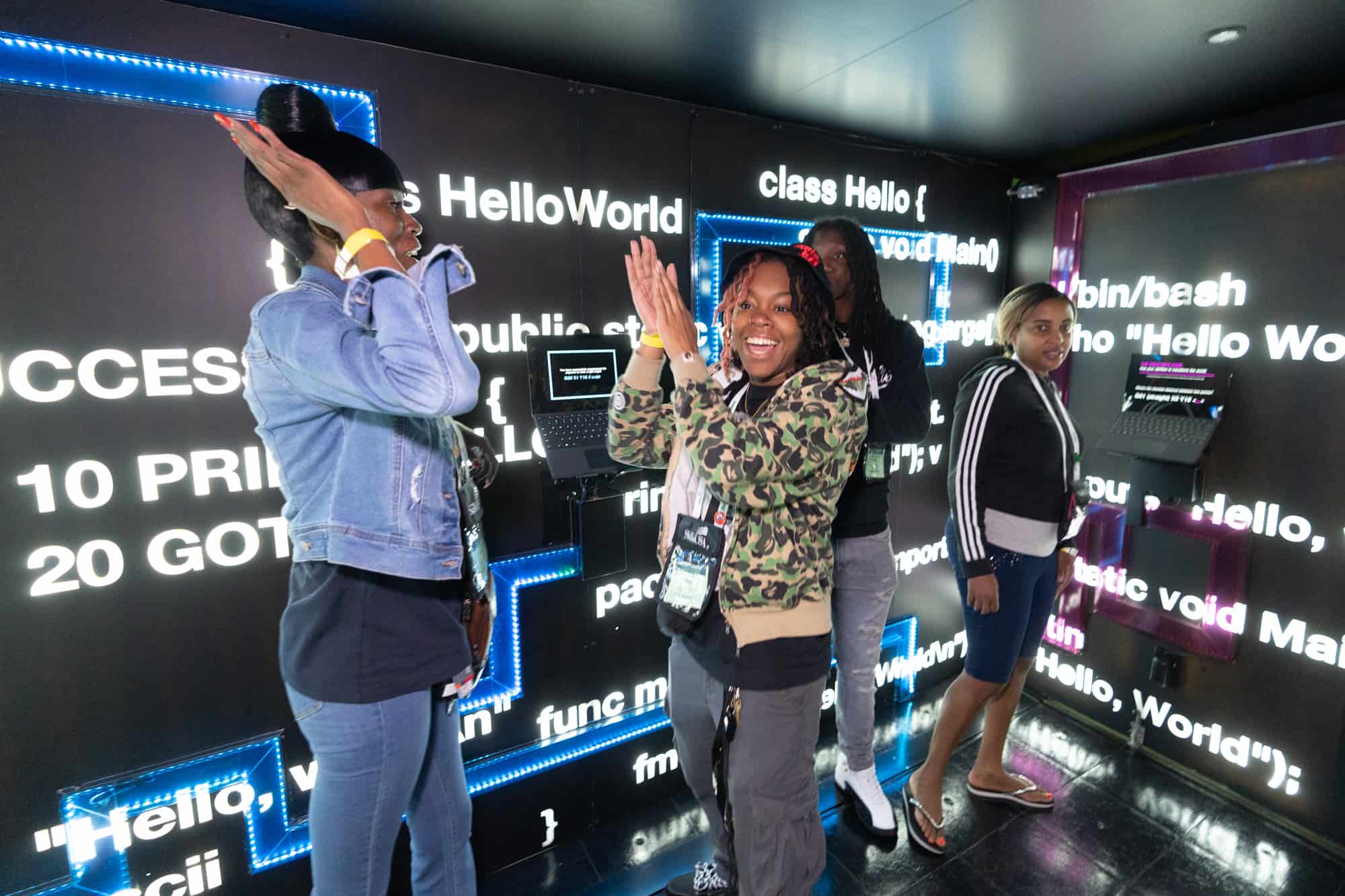
The Creators Wanted tour landed in Atlanta last week for the SkillsUSA National Leadership and Skills Conference—the largest gathering of the America’s future skills workforce.
Over the course of the three-day program, the tour, an initiative of the NAM and the Manufacturing Institute, helped change attitudes and challenge misconceptions about manufacturing, opening up a new world for some of the country’s most talented rising workers.
By the numbers: The tour’s SkillsUSA stop, sponsored by Honda, Snap-on, FactoryFix and Union Pacific, helped share the story of modern manufacturing with many of the brightest career mentors and technical education students in the United States.
- 15,000 people attended the event, including many career and technical education students, educators and parents.
- More than 1,500 people took part in the Creators Wanted immersive experience at SkillsUSA.
- More than 120,000 students and career mentors signed up to learn more about modern manufacturing careers during the tour stop in Georgia.
More participants: Other leading manufacturers were also in attendance, engaging students with information about careers in manufacturing. A few of the participants included Caterpillar, John Deere/Korematsu, Volvo NA Group, Vermeer Corp., Toyota, Cummins, Penske and 3M.
A special guest: Snap-on Chairman and CEO Nick Pinchuk dedicated a full day to inspiring students and educators. The NAM executive committee member and Manufacturing Institute board member emphasized the “Creators Wanted” mantra in order to remind participants that manufacturers aren’t just recruiting workers—they’re inspiring and empowering creators.
Local coverage: The visit made waves in Georgia, where it was covered on Fox 5’s Good Day Atlanta:
- “A huge turnout down here,” said Fox 5’s Paul Milliken, who had multiple live hits at the Creators Wanted immersive experience. “These students are so talented, so incredible … the future of America’s skilled workforce.”
- “This conference—it’s just a really incredible opportunity for these future workforce leaders to come together, meet each other, network and compete.”
WATCH: @GoodDayAtlanta's @PaulFromFox5 reports on #CreatorsWanted traveling to @GWCC_ATL for @SkillsUSA #NLSC23. Check out how we are working to inspire students to consider rewarding careers in modern manufacturing. https://t.co/0GAlhxDmTb pic.twitter.com/BFJeKyXS9G
— The NAM (@ShopFloorNAM) June 20, 2023
Overheard at the event: Plenty of participants shared their excitement, emphasizing opportunities to connect with employers, learn about new skills and find paths to future careers.
- “These are viable careers. They are jobs that you can make quite a bit of money right from the beginning, and at the same time you’re learning core skills that you can carry on for the rest of your life.”
- “We’ve got tons of jobs out there across the U.S. Everybody is looking for talented individuals.”
- “You can explore … different careers that you want to do, [to] help you become a more successful adult in the future.”
The big picture: Over the course of the Creators Wanted Tour, which launched a year and eight months ago:
- 4 million students and career mentors have signed up online to learn more about modern manufacturing careers.
- Over 10,000 students and more than 3,000 career mentors have participated in our immersive experience, with 84% reporting a significantly improved view of modern manufacturing careers.
- The tour has received $5.35 million in positive earned media and 150 million digital impressions.
Making an impact: “Interacting with the students, educators and caregivers, we could truly feel the impact we’re making,” said Chrys Kefalas, managing vice president of brand strategy at the NAM. “This isn’t just about changing minds—we’re creating dreams and altering life trajectories.”
What’s next: The tour keeps on rolling this fall to Minneapolis and St. Paul, Minnesota, and Circleville, Ohio. You can also keep an eye out for new online resources that are coming out this summer, or browse the more than 330,000 open manufacturing jobs and 150,000 training programs listed online.
“Listen and Act”: Bishop-Wisecarver Shares Retention Secrets
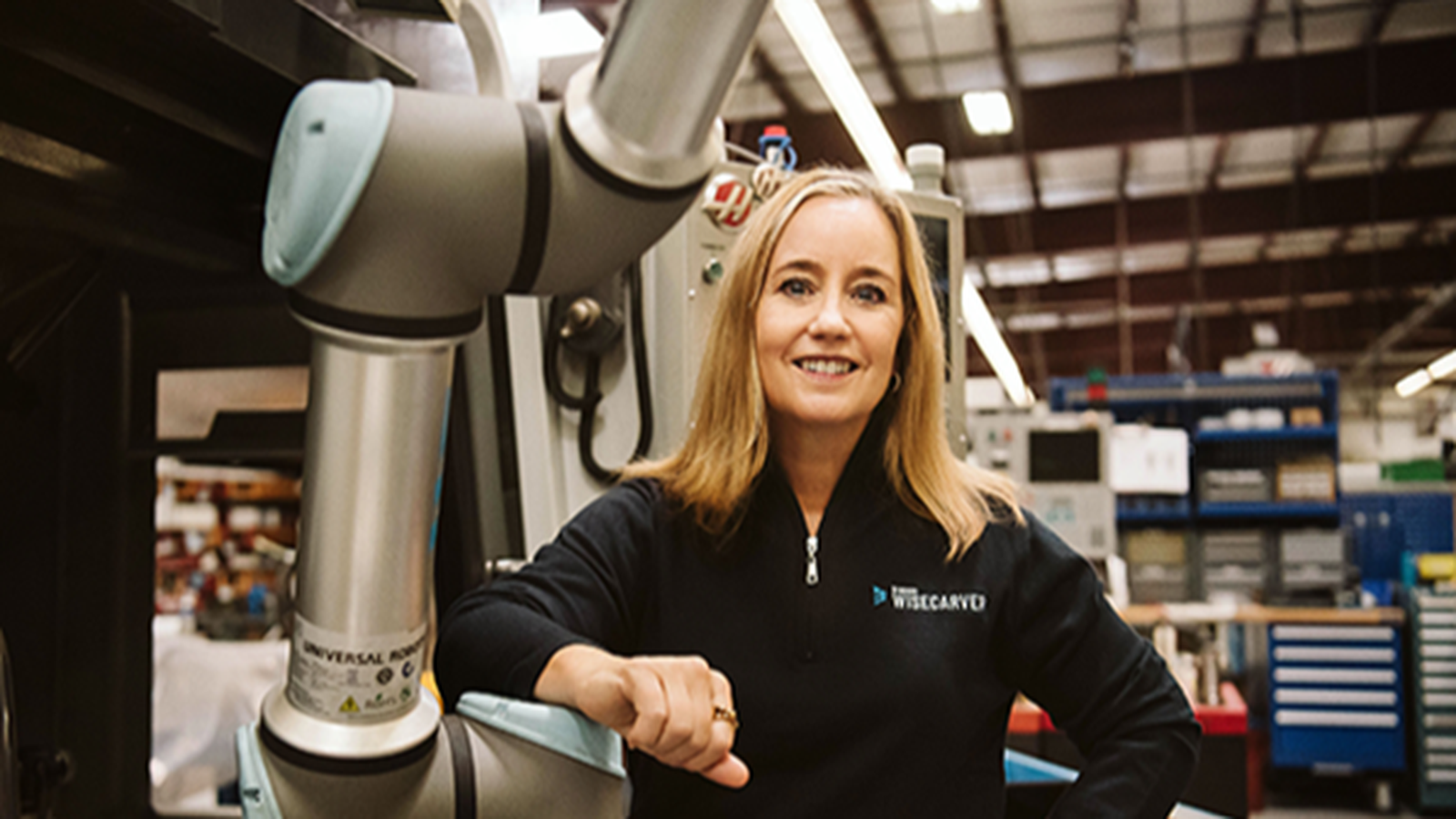
Keeping her employees happy and engaged is something Pamela Kan, president and owner of Bishop-Wisecarver, takes seriously.
And for good reason. Workforce retention is a pain point for many manufacturers and consistently cited, along with recruitment, as a top business challenge in the NAM’s Manufacturers’ Outlook Survey.
For Kan, meeting this challenge starts with getting her employees’ input—what’s on their minds, their career aspirations and the ways they think the company can improve. Then she acts on it.
Garnering feedback: To assess engagement, Bishop-Wisecarver surveys its employees and calculates an employee net promotor score, which is an internal measurement of employee satisfaction. Kan, the executive director of culture and people and department heads then discuss the areas that need improvement.
- “We share with employees where we have friction points or where things need to change,” Kan said. “We make that very visible. We then start checking these things off the list.”
The company also offers employees many different opportunities to share what’s on their minds, through informal check-ins, team huddles, employee lunches and skip-level meetings.
- “Every single one of these times we are asking for feedback,” Kan emphasized. “We document it and follow up on it, because whenever you ask for feedback and you don’t then respond with changes or next-level discussions, you break the trust with your employees that you care about them.”
- “I reach out to new employees at the 60-day mark to see how it’s going,” she continued. “One actually reached out and said, ‘yeah, we need to talk.’ It was all positive. Some things he didn’t quite understand, being new [to the company], and it showed me some gaps in our onboarding process.”
Conducting reviews: Instead of formal reviews, Kan says Bishop-Wisecarver has instituted quarterly check-ins, with the conversations often centering around career advancement.
- “We’ve tried to create a career ladder that’s not just vertical, but allows for offramps where employees can explore different channels of the company,” said Kan.
- “If somebody starts as an application engineer, that doesn’t mean they have to stay in engineering. They might want to go and try a position in sales, project management or marketing. We leave the door open.”
Other strategies: Kan has also implemented several other workplace practices to keep employees engaged.
- Recognizing employees: Through a program called “Bishop-Wisecarver Bucks,” employees receive a bank of bucks once a month that they can use to recognize others who have lived up to one of the company’s core values: preserve the family culture, deliver a signature experience, embrace a pioneering spirit and the need for speed. The company has an online portal where those receiving the bucks can purchase company merchandise, gift cards or tickets to events.
- Inspiring the next generation: Based on feedback from her employees, Bishop-Wisecarver partners with multiple nonprofits that support students in their local community. One of these is FIRST Robotics, which inspires young people to be science and technology leaders and innovators, as well as well-rounded contributors to society, by engaging them in mentor-based research and robotics programs.
- Reimagining the workspace: After polling her employees, Kan redesigned an entire building to reflect the workstyles and needs of her team. For example, the second floor of the building is now a large training space, where tables, chairs and white boards have wheels for easy configuration for company-wide meetings to multiple small groups. To break down the silos of separate lunchrooms, she created Wisecarver Way Café, complete with a pool table and ping-pong table. The company also has a space for employees to do yoga, allows them to bring their dogs to work and offers gym memberships.
- Offering support: Bishop-Wisecarver also has a program called Life Guides, which connects employees undergoing hardships with peer mentors who have been through similar difficulties, such as caring for an elderly parent or coping with a death in the family.
The last word: “Don’t ask your team for feedback and then do nothing with it,” Kan reinforced. “That’s what creates disengaged team members. Sometimes we don’t get it right, but at least we’ve tried.”
The Manufacturing Institute has many initiatives to help employers retain and develop their teams. For a deeper dive, check out this study by the MI on improving retention and employee engagement. The MI will also explore retention challenges and solutions at its Workforce Summit in Atlanta on Oct. 16–18. Click here for more information.
Creators Wanted Tour Revs Up at Indy 500
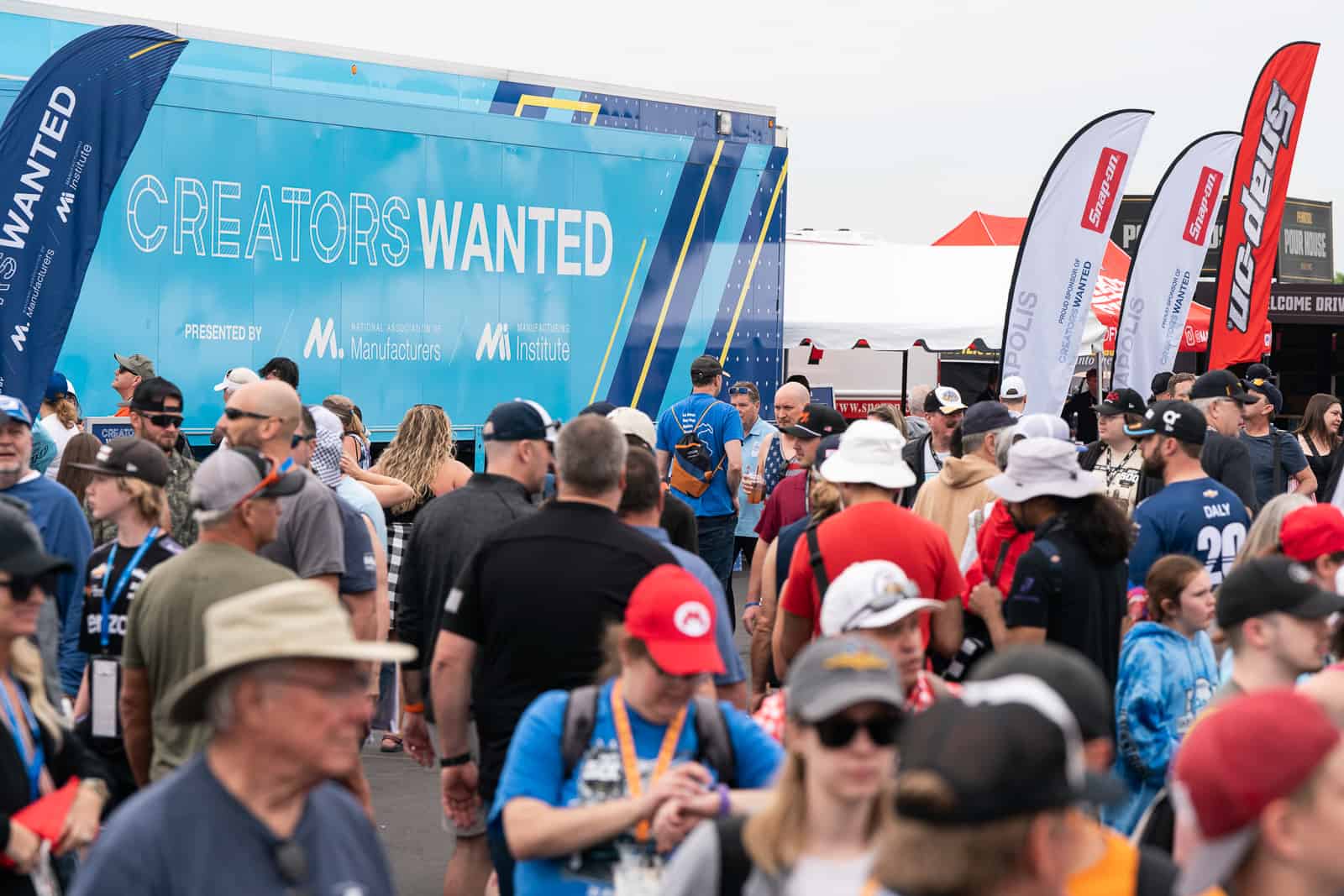
The Creators Wanted Tour, a joint project of the National Association of Manufacturers and the Manufacturing Institute, set new records at the “Greatest Spectacle in Racing”: the Indianapolis 500.
By the numbers: The tour’s 17th stop, generously sponsored by Snap-on, allowed nearly 1,600 young fans and their families to experience modern manufacturing first-hand.
- In addition, more than 72,000 students and career mentors signed up online to learn more about manufacturing careers.
- So far, over 10,000 students have taken part in the immersive experience since its launch in October 2021, with 84% of participants reporting an improved view of modern manufacturing careers. Online signups have now surpassed 1.3 million.
What they’re saying: “’Creators Wanted’ is a critical message to all young people, parents, caregivers and educators across our country,” said Snap-on CEO Nick Pinchuk, who is also an NAM executive committee member and MI board member.
- “Snap-on is proud to bring the Creators Wanted Tour to the [Indianapolis Motor Speedway] and the Indianapolis 500, showing younger race fans and their families that manufacturing is an exciting place where the opportunities are many, the careers are rewarding and the lives are filled with the pride of being part of something greater than yourself,” he continued.
- NAM President and CEO and MI Chairman of the Board Jay Timmons added, “The world’s largest single day sporting event met the nation’s largest manufacturing campaign—and it revved up enthusiasm about modern manufacturing in a big way with more students and their families.”
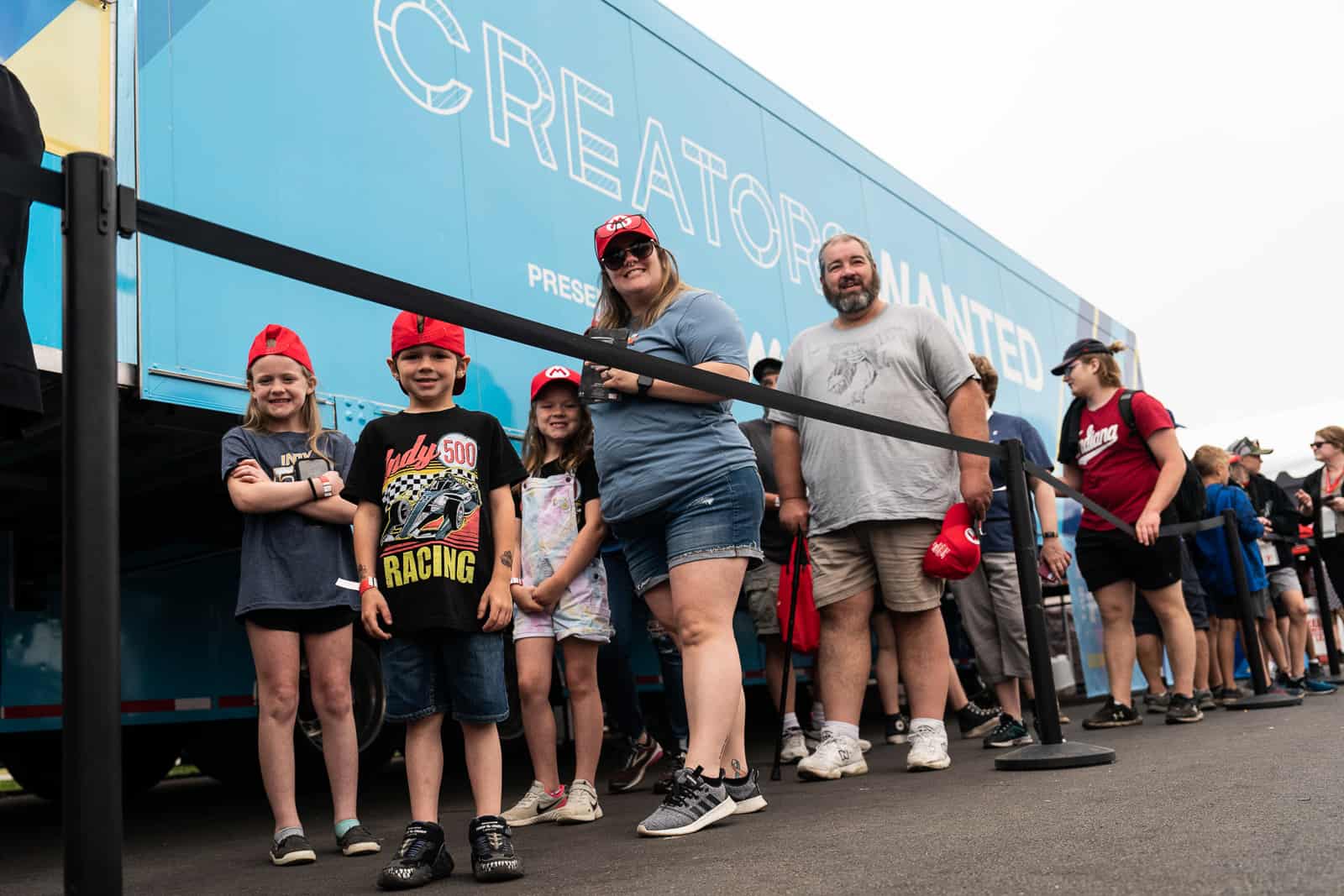
Behind the scenes: Alongside the Creators Wanted experience at Fan Midway at the Indianapolis Motor Speedway (IMS), fans were also treated to a number of other interactive exhibits.
- These included: Snap-on’s “Makers and Fixers” tent; Honda’s racing simulator and vehicle fleet; the IMS Kids Zone where young fans raced on their own track; and FactoryFix’s activities and resources to help people find their path into manufacturing careers, including its work through CreatorsWanted.org.
- “Seeing folks at Indy curious about our ‘Creators Wanted’ campaign was such a great confirmation of the research and testing we did to arrive at the name for this effort,” said Erin Streeter, Executive Vice President of the NAM. “When parents and kids asked us about the type of creators we need in manufacturing, it just showed how spot-on our message really is.”
- The NAM video team captured some of the fan sentiment with this video.
The big picture: “These tour stops often serve as the first interaction individuals have with the NAM and the MI, and the impression is powerful,” said Chrys Kefalas, Managing Vice President of Brand Strategy at the NAM. ” These meaningful personal interactions create lasting impressions and underscore the industry’s value.”
Army, Navy, Air Force, and Marines! Heroes MAKE America is Reaching More Veterans
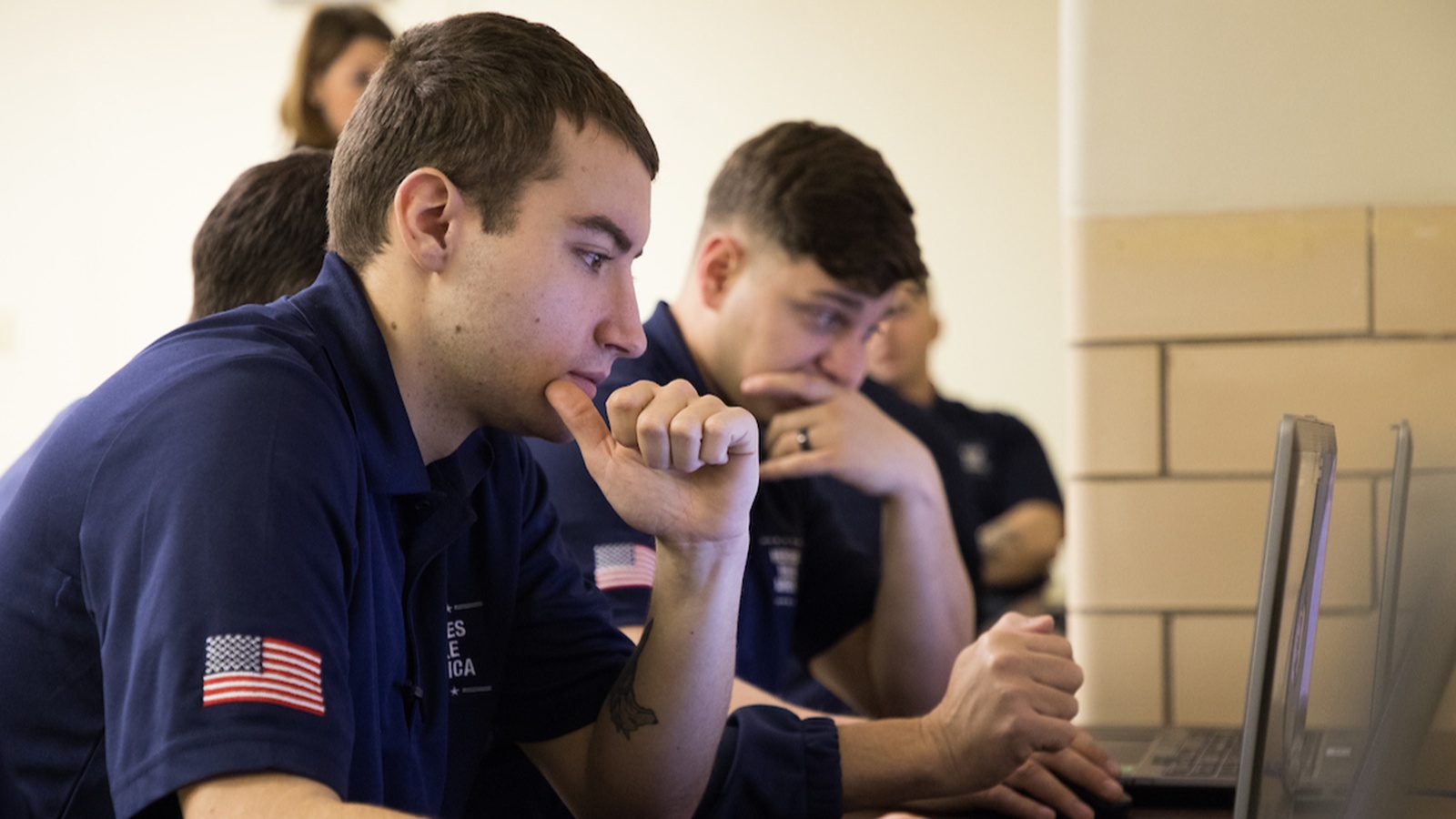
When service members leave the military, manufacturers are quick to say: “Come on over!” Military skills are usually a great match for manufacturing careers, which require attention to detail, technical abilities and creative thinking. And there’s no better matchmaker than the Manufacturing Institute’s Heroes MAKE America initiative, which since 2018 has been offering training certification programs and career courses to transitioning service members and veterans.
Today, HMA not only serves service members on military installations across the country but has also expanded its reach via a virtual training program.
Widening the reach: Now in its second year, the virtual training program has allowed HMA to impact service members on a national scale.
- For the first time, members from four branches—Army, Air Force, Marine Corps and Navy—are participating in the same class at the same time.
- Additionally, the geographic range of participants has increased to comprise students located far and wide, including in Alaska, Arizona, Delaware, Kansas and Kentucky.
- The program has reached more than 120,000 prospective students through local transition assistance, HMA’s LinkedIn and Facebook presence and the SkillBridge website.
How it works: HMA partnered with Texas State Technical College to create a virtual nine-week training and certification program.
- Participants earn nationally portable, industry-recognized Certified Production Technician certification as well as an OSHA 10 certification.
- Through Heroes Connect, HMA also partners with sponsors like Johnson & Johnson, The Caterpillar Foundation, Amazon, Howmet Aerospace, WestRock, Saint-Gobain, Atlas Copco, Cargill, FUCHS Lubricants Company, C.H. Guenther & Sons, Honda Foundation, Niagara Bottling and the NAFEM, PPI and SEMI Associations to connect program graduates and members of the military community with manufacturers.
What we’re saying: “It’s exciting to see members from four branches of the military all in one virtual classroom together,” said Heroes MAKE America Senior Program Manager Katie Bowerman. “There’s a lot of strength in that kind of diversity.”
Spread the word: Do you have jobs for which HMA students might qualify, or know of a service member who would want to join the program? The HMA virtual program is open to any transitioning service member who is in their last six months of active-duty service, as well as to veteran and active-duty military spouses. For more information, contact [email protected].
An Electrical Manufacturer Sparks Inclusion and Diversity
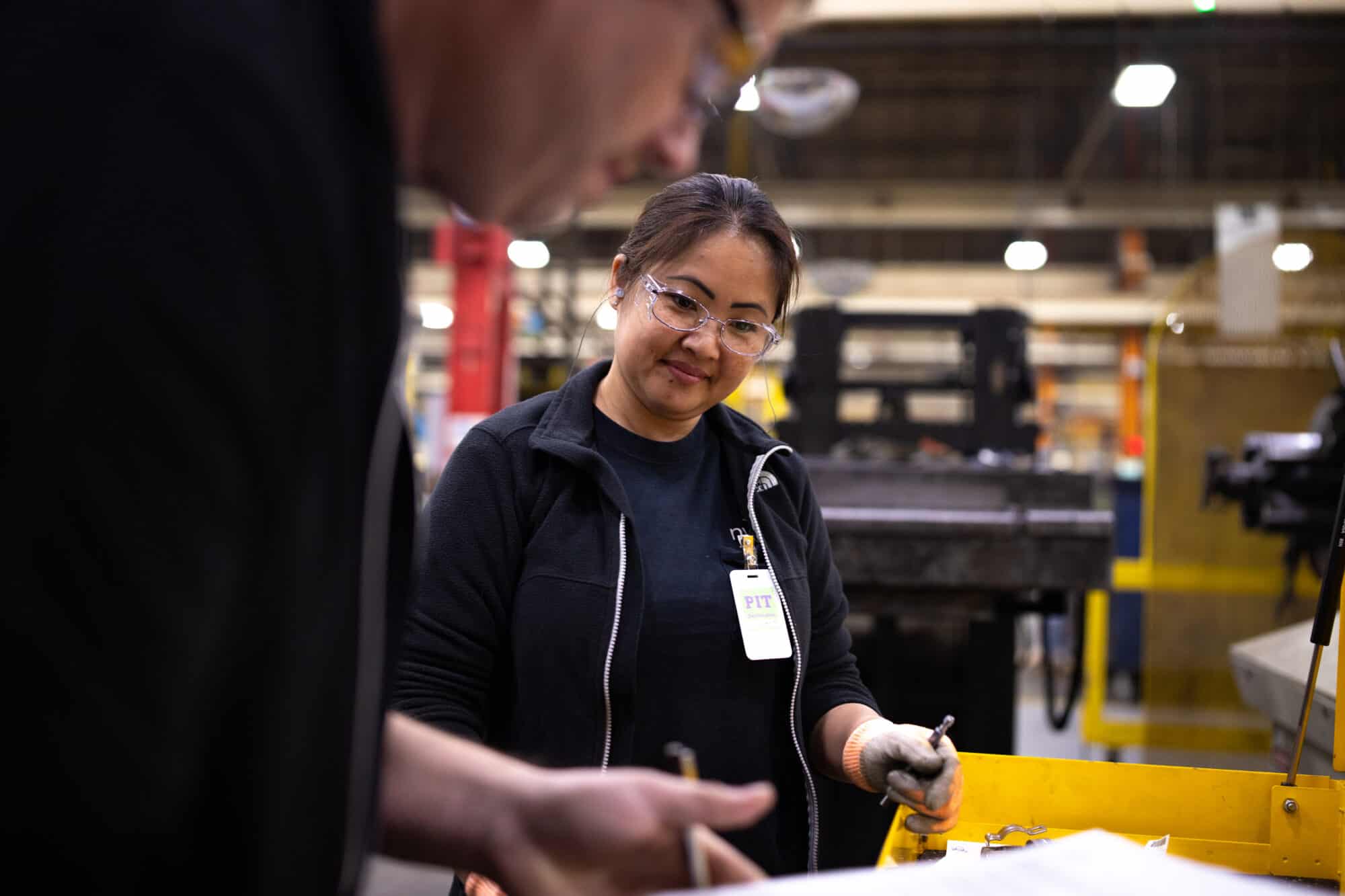
Manufacturers nationwide are taking steps to ensure a supportive and respectful workforce that values the varied talents and backgrounds of all employees. nVent—a manufacturer of electrical connection and protection solutions—believes that inclusion and diversity initiatives have the potential to positively impact every part of its business.
Inclusion and diversity have been a priority for nVent since it became a public company in 2018. By identifying strategic initiatives for its inclusion and diversity efforts, nVent has become a thought leader in the electrical manufacturing industry. Five years later, those initiatives have become a comprehensive strategy that is embedded in the company’s operations.
“We may not always have the answers,” said Chief Inclusion and Diversity Officer Laura Brock, “But we want to make sure we create an opportunity for progress and share the resources we have developed with our customers and partners to drive inclusion in our industry.”
A comprehensive strategy: nVent’s strategy is built around four pillars designed to promote inclusion and diversity throughout the company, according to Brock and Inclusion and Diversity Manager Jasmin Buckingham.
- Employees: From recruitment onward and throughout the employee lifecycle, nVent ensures that inclusion and diversity is part of every employee’s experience.
- Communities: nVent strives to be “a good citizen” in its community by promoting shared economic growth through multiple avenues—including philanthropy. It has made inclusion and diversity a central aim of these efforts.
- Customers: The company supports a diverse range of customers in the electrical industry and works to meet all customers where they are.
- Suppliers: nVent is focused on supplier diversity, which promotes engagement, growth and innovation through diverse business relationships.
Other initiatives: nVent runs several initiatives within its pillar strategy to drive inclusion and diversity across the company:
- ERGs: Employee Resource Groups are an important part of inclusion and diversity at nVent. These groups are “the hands and feet of creating an inclusive culture,” according to Brock. All employees are welcome to join ERGs, which create connections between peers across the globe. The ERGs allow employees to share experiences and discuss topics that are important to them, she added.
- Workshops: After the murder of George Floyd in 2020, nVent hosted workshops where people could ask questions and engage in discussion about race and injustice. Attendance sometimes topped 900 employees.
- Learning circles: nVent created a series of additional opportunities to bring employees together in inclusive spaces. These smaller groups allow employees to share stories and engage in open conversation.
Accountability for inclusion: Brock and Buckingham made it clear that the company’s inclusion and diversity work requires constant progress and accountability—making it essential to track metrics and promote improvements.
- Through an “inclusion index”—an employee pulse survey that sent out four times a year—nVent employees share their honest feedback. The data is then used to generate ESG scorecards for departments and leaders, which are a factor in compensation.
- “The choices we make and the behaviors we exhibit impact our culture at nVent. Everyone plays a role in creating an inclusive and respectful environment for all,” according to Brock.
Taking the pledge: nVent is also a proud signatory of the NAM’s Pledge for Action, which commits the industry “to taking 50,000 tangible actions to increase equity and parity for underrepresented communities, creating 300,000 pathways to job opportunities for Black people and all people of color” by 2025.
Advice for the industry: Companies should “get comfortable being uncomfortable,” according to Buckingham. “It can be uncomfortable having these open conversations … but it is important and impactful so that you can learn and understand one another better to make it a more inclusive workplace.”
Chart’s Jillian Evanko on the Adventure of Manufacturing Jobs
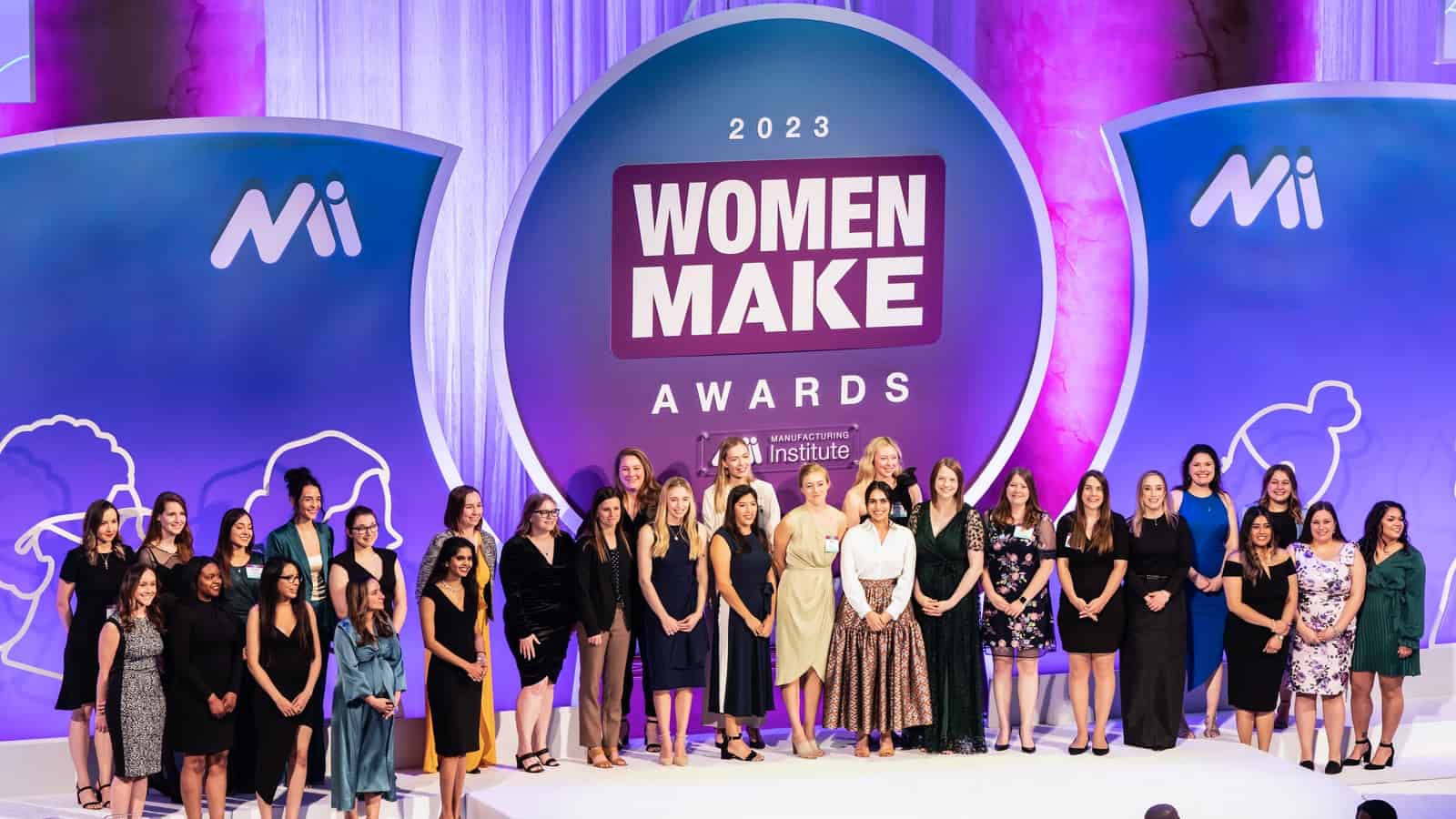
If you’re looking for a career with no “typical days,” Jillian Evanko would advise you to choose manufacturing.
Mixing it up: Every workday offers something new and exciting for Evanko, the president and CEO of Chart Industries, a global leader in the design, engineering and manufacture of process technologies and equipment for the clean energy and industrial gas markets.
- “Whether I have a customer meeting, an investor conference, a keynote speaking event, a panel session or meetings with my executive team, every single day looks different to me, which is what I love about my job,” said Evanko.
Business sense: It was a talent for business that led Evanko—a 2023 honoree of the Manufacturing Institute’s Women MAKE Awards, which recognize outstanding female talent in the manufacturing sector—to the industry.
- “Early in my career I worked for Honeywell and Dover Corporation in various financial and operational roles,” said Evanko, who holds a Master of Business Administration from the University of Notre Dame.
- Once she entered the field, she found that she genuinely enjoyed it—and she’s here to stay. “The fast-moving, exciting nature of the manufacturing industry is what keeps me in it,” she said. “There is always an opportunity to innovate or make a technological development, and you really get to see the impact of what you produce making a difference in everyday life.”
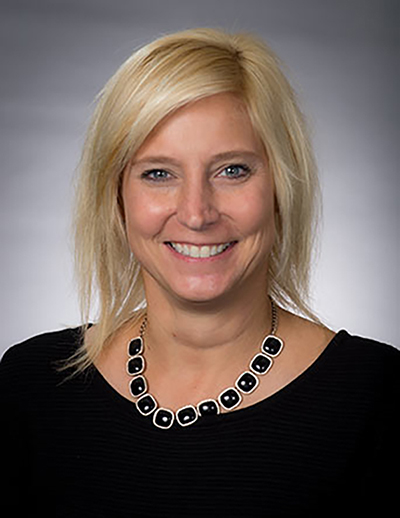
A changing industry: Evanko has seen manufacturing evolve for the better since she got her start, especially for women employees.
- “In the past few years, I think the world has come to recognize that there is a direct correlation between diversity in manufacturing and increased innovation,” she said. “By diversifying a workforce, you gain access to new thoughts, ideas and perspectives.”
- “Since I’ve begun my career, I have seen more women enter the manufacturing industry, and even within my past five years at Chart, we are continuing to see more women taking on more senior roles, including operations and manufacturing roles.”
Growing company: In recent months, Evanko has been even busier than usual, as Chart Industries recently completed its acquisition of Howden, an air- and gas-handling products manufacturer and services provider.
- The acquisition, Chart’s largest to date, has doubled the size of the company’s engineering team. It “helps us expand into new geographies and gain access to new customers, and it provides us with a much more expansive Nexus of Clean™ offering,” she said, referring to the firm’s array of products and solutions for a more sustainable future.
The best, period: Evanko devotes much of her time to helping and educating others. One example of this is the way she provides her daughter’s Girl Scout troop with access to entrepreneurial speakers, as well as information about the world of manufacturing. She has developed a mantra that keeps her constantly striving for improvement:
- “I like to say that I don’t want to be the best female CEO, I want to be the best CEO,” she said. “For women in manufacturing looking to grow in their careers, aim to be the best you can be despite gender, age or background.”
- “Be confident in what you bring to the table and never underestimate your abilities,” she continued. “Listen to others and empower them to bring their ideas forward. And never underestimate the power of simply being kind.”
Second Chance Hiring Toolkit for Local Communities
The MI released our latest resource: the Second Chance Hiring Toolkit for Local Communities. Through interviews with employers, partners, and local stakeholders, as well as a review of other efforts across the country, the MI developed the toolkit to support local leaders– or “hub organizations”– to design and implement multi-employer second chance collaboratives in their region. The intended audience for this toolkit includes state and local manufacturing associations, chambers, and other locally-based organizations to build and implement a place-based second chance employment pilot program. Employers can also reference this toolkit for direction on how to get started with their own second chance hiring journey.
If you have questions, please reach out to Pooja Tripathi, Director of Workforce Initiatives at [email protected] for more information.
Solution Series: Recruitment Workshop
Solution Series: Recruitment Workshop
The MI recently convened a group of manufacturers to discuss recruitment challenges and identify ways to address them. After hearing from experts on topics ranging from the current labor market, second chance hiring, the gig economy and the importance of speed in recruitment, participants broke out into small groups to discuss the top challenges they were facing and brainstorm solutions.
KEY TAKEAWAYS:
- Determine who owns what part of the recruitment process as well as how team members will be held accountable.
- Advertise the position effectively, streamline the application process and screen as many people in as possible.
- Invest time and resources into sourcing talent.
Check out our recap article of the event here. Stay tuned for an in-depth summary report highlighting the solutions that manufacturers are testing and implementing to address recruitment challenges.
